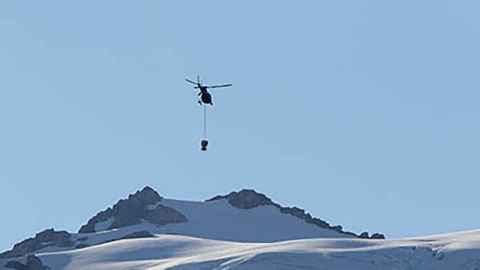Scientists model pest control across all of Aotearoa
5 September 2022
New Zealand aims to eliminate predators like rats and possums. Researchers investigated how best to do it.

University of Auckland researchers modelled mammal pest control across all of Aotearoa New Zealand to reveal which tools – such as traps, poison baits, or exclusion fences ¬¬– will work in each area.
“The good news is that we can achieve much more with existing pest control tools,” said doctoral student Zachary Carter, who led the research. “Our research showed large swathes of land in both the North and South Islands will be suitable for traps or poison dropped by air.”
However, the study also highlighted a challenge: controlling pests in rugged and remote places which aren’t suitable for poisoning, trapping or fencing, such as Fiordland and mountainous regions of the South Island’s west coast.
Aotearoa’s ambitious goal is to eliminate rats, possums, ferrets, stoats and weasels by 2050 to save our wildlife and allow endangered birds such as the kākāpō to spread across the nation instead of being confined to small predator-free islands.
The good news is that we can achieve much more with existing pest control tools
In detailed findings from the research:
- Poison dropped from the air has been applied to about 12 percent of New Zealand’s land (33,000 square kilometres) but about an additional 10 percent (26,000 square kilometres) of land is amenable to this tool
- Roughly 11 percent (or 29,000 square kilometres) of all invaded land may be unsuitable for existing pest control tools
- Exclusion fences will remain a very targeted tool, with only about 0.2 percent of suitable land on the mainland (500 square kilometres)
“There are some spots that are extremely difficult to get to,” said Carter. “For these highly remote and inaccessible locations, we are going to need some new tools – new technologies, or the novel application of existing tools.”
Professor Dan Tompkins, the science director of Predator Free 2050 Ltd., said: “This research shows that current tools and approaches are insufficient even for national predator suppression. That’s a critically important finding.”
“A focus is urgently needed on scientific breakthroughs to ensure Predator Free 2050’s national eradication goals can be reached on time,” Professor Tompkins said.
Researchers relied on machine-learning techniques for the study, which divided the country into small units then looked for similarities to model which existing pest control methods would suit other areas.
“We leveraged the collective knowledge of existing pest control groups,” said Carter.
The research team included University of Auckland academics Professor James Russell, of the School of Biological Sciences and Department of Statistics, and Professor George Perry, of the School of Environmental Sciences, along with Jeffrey Hanson from Carleton University in Canada.
“All of our conservation eggs tend to be in small island baskets, such as Tiritiri Matangi and Kapiti,” said Professor Russell. “The hard work now is getting our biggest islands predator free.”
The research was published in the Journal of Applied Ecology.
Media contact
Paul Panckhurst | media adviser
M: 022 032 8475
E: paul.panckhurst@auckland.ac.nz